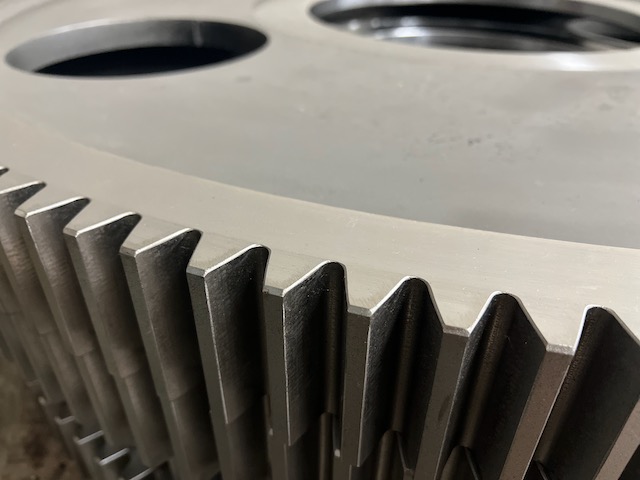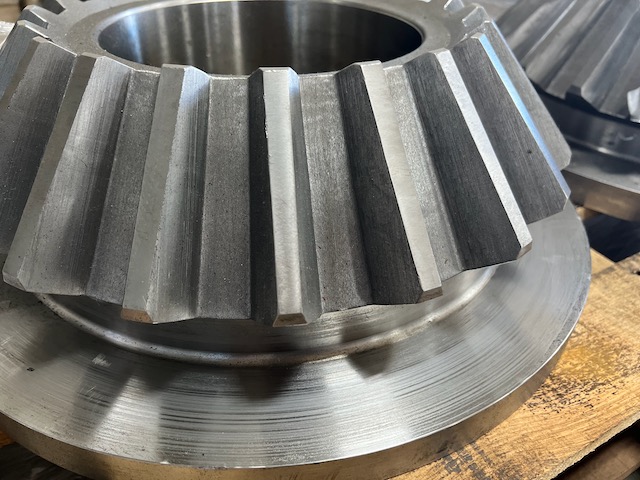Why Choose Induction Hardening?
Induction hardening is a specialized heat treating process used to selectively harden specific areas of a metal component. It is commonly employed for parts that require high surface hardness, such as gears, shafts, camshafts, and various machine components. Induction hardening provides localized hardening while retaining the toughness and ductility of the rest of the component.
The induction hardening process involves the following steps:
- Heating: An induction coil, which is a copper coil carrying an alternating current, is positioned close to the surface of the metal component. When the alternating current passes through the coil, it creates a rapidly changing magnetic field. This magnetic field induces electrical currents, known as eddy currents, in the surface layer of the component. The resistance of the material to these currents generates heat, causing localized heating.
- Quenching: Once the desired temperature is reached, the induction heating is stopped, and the heated area is rapidly quenched to cool it down. Quenching is typically accomplished by using a spray of water, oil, or a polymer-based quenchant. The rapid cooling rate of the quenchant hardens the heated area, resulting in increased hardness and improved wear resistance.
The key advantage of induction hardening is its ability to selectively heat and harden specific areas of a component while leaving the rest of the part unaffected. This localized hardening minimizes distortion and allows for precise control over the hardened zones. Additionally, induction hardening offers several benefits:
- Speed: Induction heating is a rapid process, enabling high production rates and shorter cycle times compared to other heat treating methods.
- Energy efficiency: Induction heating is highly efficient as it directly heats the workpiece, minimizing energy wastage.
- Automation: Induction hardening can be easily integrated into automated production lines, ensuring consistent and repeatable results.
- Reduced distortion: Due to the localized heating and rapid quenching, induction hardening minimizes distortion and residual stresses in the component, preserving its dimensional stability.
It’s important to note that the success of induction hardening depends on factors such as the material composition, geometry of the component, and the specific requirements for hardness and depth of the hardened layer. Therefore, process parameters need to be carefully optimized to achieve the desired results.



